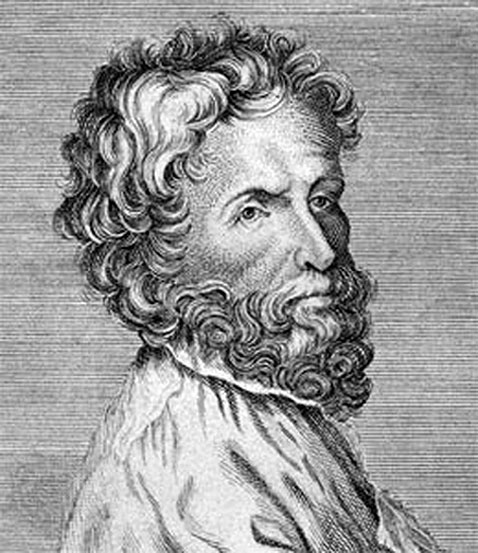In Celebration of the Human Voice - The Essential Musical Instrument
Home | Doo Wop | Barbershop | World | Contemporary | Christian | Vocal Jazz | Choral | Christmas | Instructional | Arrangements
Classical | Opera | Musicals | Personality | Young Singers | Disney | Videos | Songs | The Artists

Cristobal de Morales Biography

Click Here for Sheet Music and Songbook Vocal Arrangements
Almost all of his music is sacred, and all of it is vocal, though instruments may have been used in an accompanying role in performance. He wrote many masses, some of spectacular difficulty, most likely written for the expert papal choir; he wrote over 100 motets; and he wrote 18 settings of the Magnificat, and at least five settings of the Lamentations of Jeremiah (one of which survives from a single manuscript in Mexico). The Magnificats alone set him apart from other composers of the time, and they are the portion of his work most often performed today. Stylistically, his music has much in common with other middle Renaissance work of the Iberian peninsula, for example a preference for harmony heard as functional by the modern ear (root motions of fourths or fifths being somewhat more common than in, for example, Gombert or Palestrina), and a free use of harmonic cross-relations rather like one hears in English music of the time, for example in Thomas Tallis. Some unique characteristics of his style include the rhythmic freedom, such as his use of occasional three-against-four polyrhythms, and cross-rhythms where a voice sings in a rhythm following the text but ignoring the meter prevailing in other voices. Late in life he wrote in a sober, heavily homophonic style, but all through his life he was a careful craftsman who considered the expression and understandability of the text to be the highest artistic goal. Morales's masses, of which 22 survive, use a variety of techniques, including cantus firmus and parody. Six masses are based on Gregorian chant, and these are mostly written in a conservative cantus-firmus style. Eight of his masses use the parody technique, including one for six voices based on the famous chanson Mille regretz, attributed to Josquin des Prez. The melody is arranged so that it is clearly audible in every movement, usually in the highest voice, giving the work considerable stylistic and motivic unity. Morales also wrote two masses on the famous L'homme arme tune, which was so often set by composers in the late 15th century and 16th century; one of these is for four voices, and the other for five. The four voice mass uses the tune as a strict cantus firmus, and the setting for five voices treats it more freely, migrating it from one voice to another. In addition, he wrote a Missa pro defunctis (a Requiem mass). Its peculiarities of transmission, as well as its apparent incomplete editing, suggest that it may be his last work. Morales was the first Spanish composer of international renown. His works were widely distributed in Europe, and many copies made the journey to the New World. Many music writers and theorists in the hundred years after his death considered his music to be among the most perfect of the time. The 'Parce mihi Domine' from his Officium Defunctorum was used as the key track (in three versions) on the best selling Jazz and Classical Album of 1994, Officium, by Jan Garbarek and the Hilliard Ensemble. |
Select a Category |
Want to Sing? - Find a Chorus Near You
List of Choruses by State | List of Choruses by City
